By Andrea Mannberg, Handelshøgskolen and CARE, UiT – the Arctic University of Norway
The mountains have started to dress up in white in the northern hemisphere. Beautiful white giants are calling, and many of us feel a hunger to head out there and taste the fresh snow.
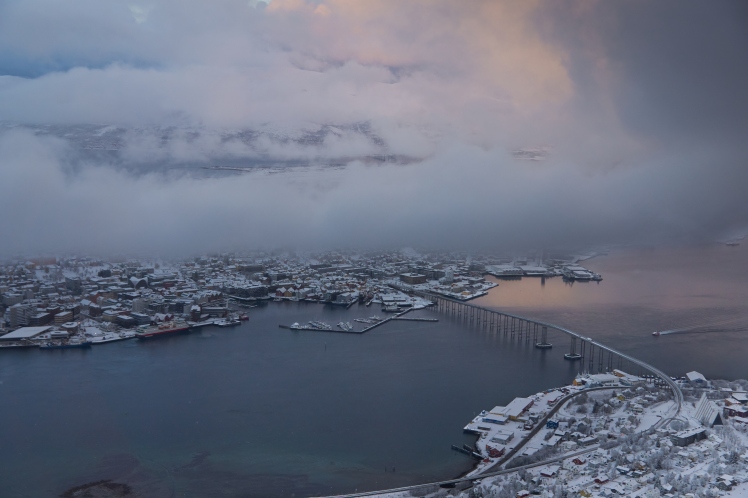
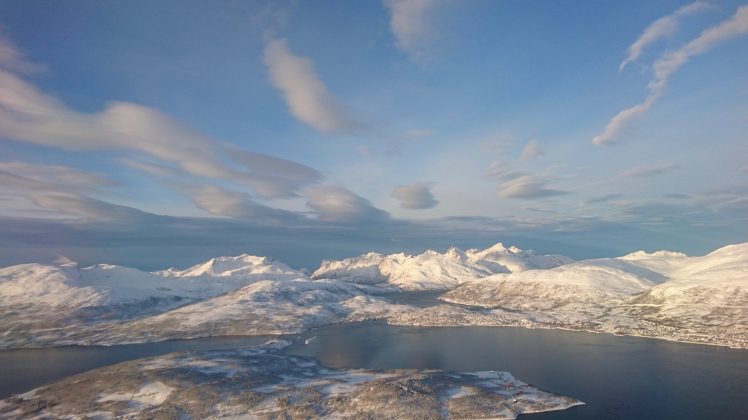
Every year, when I scent the smell of snow in the air, I feel a flutter in my stomach, but it is not only pleasant. I feel excited about the adventures that the coming ski season will bring; the smell of snow makes me think about all the good snow that I will ride, how I will try to advance my riding skills, and all the beauty that I will see, but I also feel dread. How many fatal accidents will there be this winter? Will I know any of the victims? Will I be a victim? Am I competent enough to evaluate the snowpack? Am I confident enough to trust my evaluations? Am I irrationally scared, or do I feel irrationally safe? This winter has already claimed its first avalanche fatality. I keep my fingers crossed that there will be no more, but crossed fingers do not do much use.
It is high time to wire up that avalanche brain. What better way to do exactly that, then to go to an avalanche conference?
Every other year, Norway hosts the Nordic Avalanche conference. This year, the conference took place in the small town, Åndalsnes, on Vestlandet.
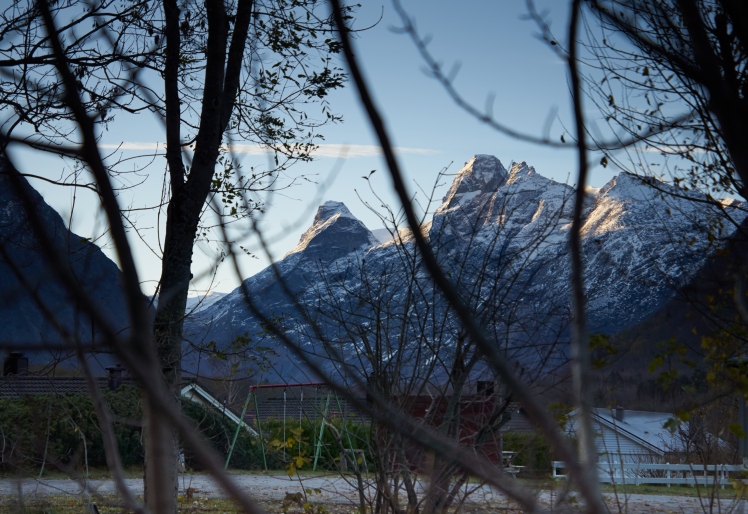
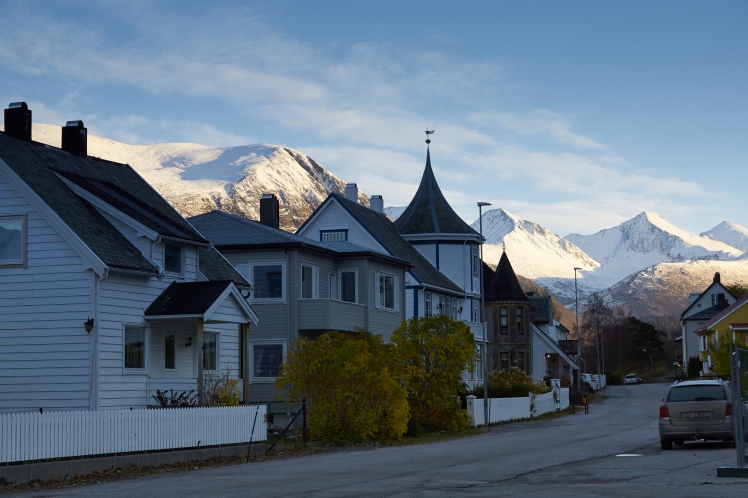
It is impossible to give a complete and fair description of all presentations given at the conference: during 3 fullpacked days, I listened nearly 50 great presentations by prominent avalanche researchers and practitioners from Norway, Iceland, Sweden, USA, and Austria.What I can do, is to provide a few glimpses of what went down in mid-west Norway during November 2nd to November 5th, 2017. Please note that the below text is my interpretation of the presentations that I had the privilege to listen to. There may be errors as my brain got a bit overloaded from time to time. I have tried to provide links for those of you who are interested in reading more on each subject.
The Norwegian Avalanche Association
We started the event on Thursday evening by launching the Norwegian Avalanche Association (Norskred), an organization for and by people whose work (paid or unpaid) is related to avalanches. Our aim is to create a platform for collaboration between researchers and practitioners in different fields of avalanche accident prevention, and to disseminate new avalanche knowledge. I feel extremely privileged to have been elected as one of six board members that will work to coordinate and fulfill the members’ wishes and needs during the next two years. Read more about the Norwegian avalanche association and get updates at norskred.no.
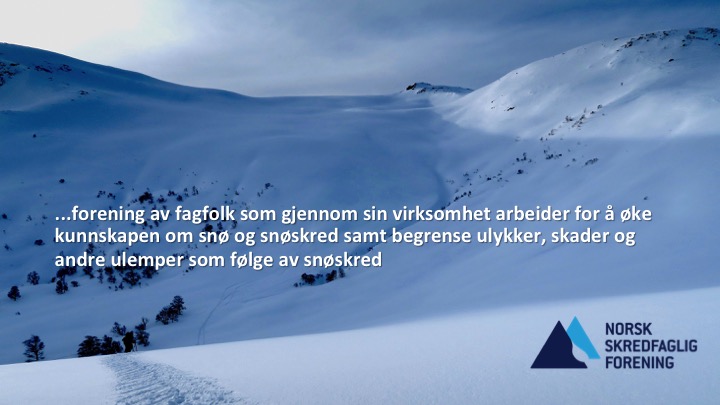
Using ski tracks to understand behavior in avalanche terrain
On Friday, we had the privilege to listen to Jordy Hendrikx talking about his work at Snow and Avalanche Lab, Montana State University. Among other things, Jordy showed us how time-lapse photography can be used to analyze terrain choices under various avalanche conditions.
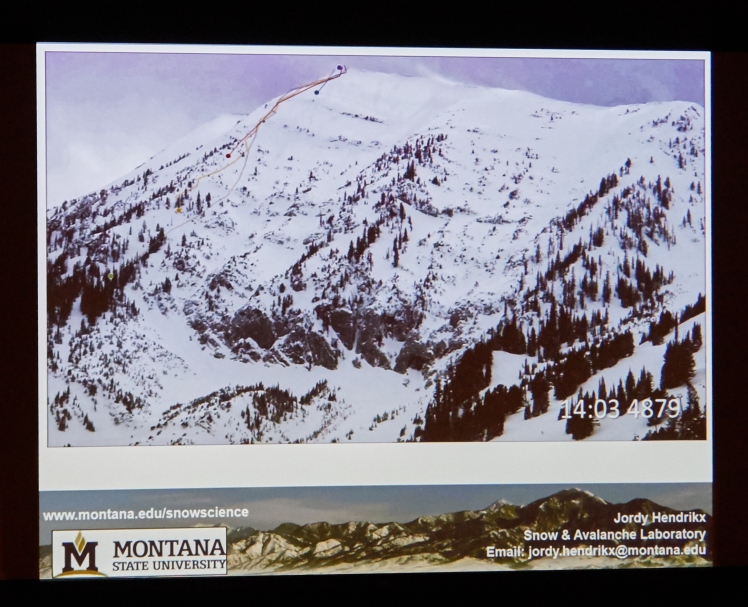
Jordy also talked about the importance of deriving a more nuanced measure of risk-exposure. By the use of Avalanche Terrain Exposure Scale (ATES), we are able to divide terrain into simple (mainly forested, low angle terrain. Many options to avoid avalanche run-out zones), challenging (exposure to well-defined avalanche paths, starting zones, or terrain traps. Some options to reduce exposure), and complex (exposure to multiple avalanche paths, starting zones and terrain traps. Minimal options to reduce exposure). If we combine an analysis of the time spent in different types of terrain, with an analysis of the current avalanche problem and hazard, we have a substantially better ability to evaluate the risk that a rider exposes him or herself to under a given avalanche hazard
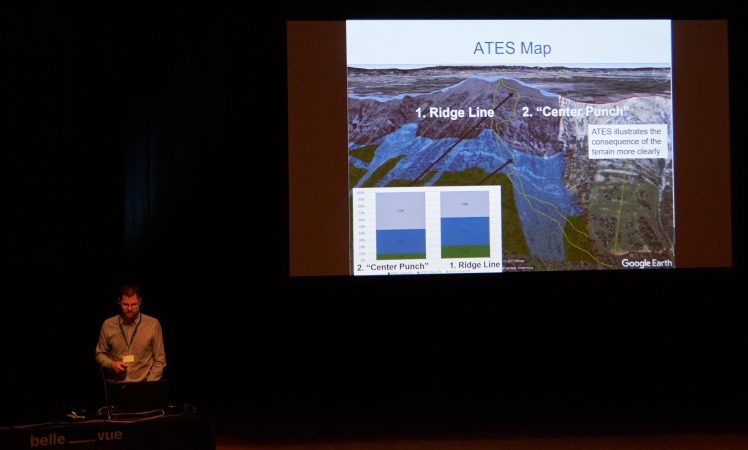
Are rule-based methods good enough?
Markus Landrø (NVE and UiT – the Arctic university of Norway) and Walter Würtl (UIAGM mountain guide and editor of Bergundsteigen), talked about potential problems with rule based decision-making in avalanche terrain. Markus Landrø is currently pursuing a PhD at the Centre for Avalanche Research and Education (CARE) at UiT. His goal is to derive a method that is simpler, more dynamic and nuanced than previous methods. He calls this method WISE – Why Is It Safe (Enough)? The method (which is not developed yet) rests on three fundamental questions that we all should ask ourselves when we venture into the backcountry: Is this avalanche terrain? Is the avalanche problem(s) present? Can I mitigate the risk?
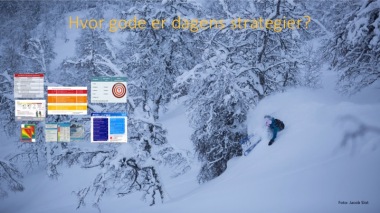
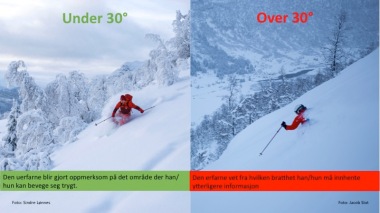
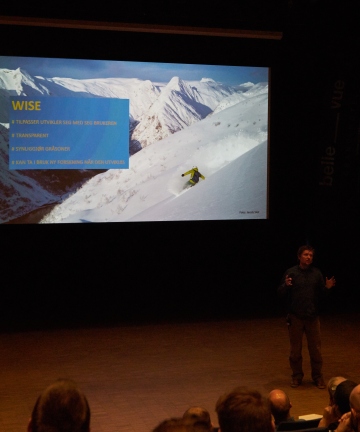
These questions may appear to be too simplistic, but if we answer them honestly, they actually tell us what we need to know. Am I compentent enough to evaluate if I am in avalalanche terrain or not? If the answer is that I lack this competence or feel uncertain, then I should stay in controlled areas because I cannot even evaluate if I am exposing myself to risk or not. Am I confident that I can evaluate if the avalanche problem is present or not? If not, I should stay in mellow terrain (given that I can evaluate the terrain). An experienced rider, who is able to evaluate if the avalanche problem is present or not, should use his or her knowledge to do so (and not just rest on rule-based methods). He or she should also evaluate to what extent the risk can mitigated by careful terrain use. By the use of WISE, Markus hope (if I interpret him correctly) is that we will avoid exposing us to unnecessary high risk on a low risk day (when rule-based methods may seem to allow us to ski relatively steep terrain everywhere), and to be able to ski steeper (but safer) terrain under higher avalanche hazard days (by avoidance of the avalanche problem). It is going to be very interesting to follow Markus’ future work!
Walter Würtl’s talk relates to that of Markus. Walter’s analysis of accidents in Austria reveals that most were caused by a persistent weak layer, and many of the avalanches were triggered on relatively flat terrain without any previous danger signs. His conclusion is that when the avalanche problem is constituted by a persistent weak layer, rule-based methods do not work very well. His main advice to us all was to follow the snowpack and dig more pits to gain knowledge about the avalanche problem present.
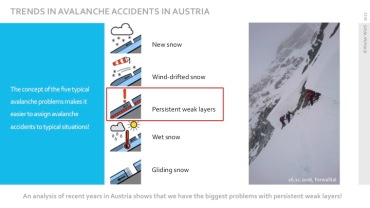
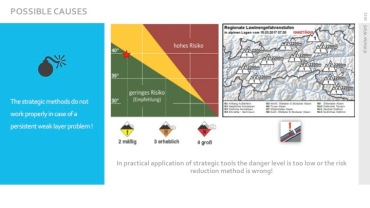
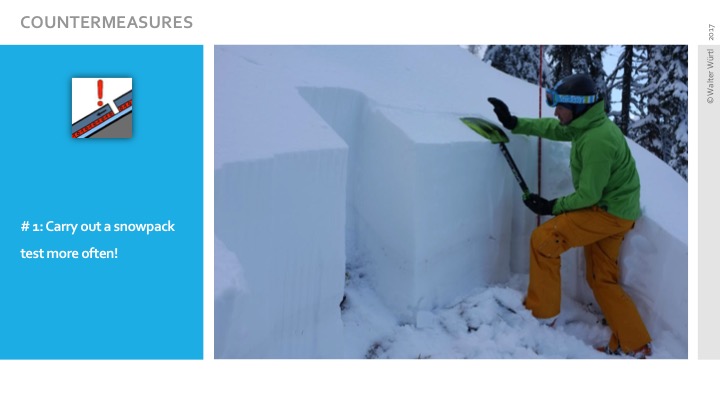
Are you safe (enough) on your way to the mountains?
During the conference, we had the opportunity to listen to several interesting presentations about the Nordic countries’ work with securing roads and buildings from avalanches. Both Norway and Iceland have an impressive amount of roads exposed to avalanches, so decisions related to both the construction of various types of avalanche mitigation structures, opening and closing of roads, and permission to build houses in different areas, are of immense importance. To be able to make these decisions, good hazard maps are key. Norway has fantastic maps (available online here and here). However, in many cases, the existing maps are not detailed enough to construct correct hazard maps. A new method, using drones have recently been tested on Trollstien. The results are impressive!
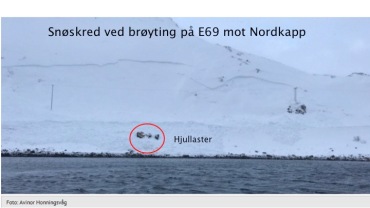
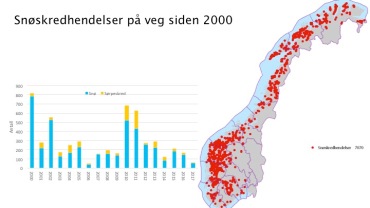
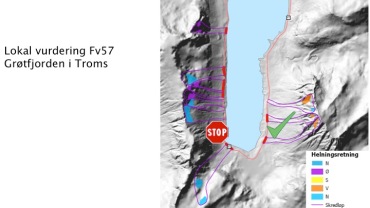
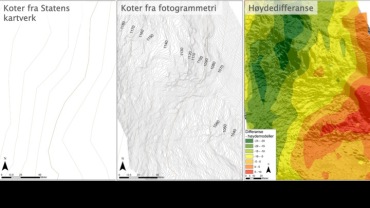
However, terrain maps aren’t enough. If we were only to evaluate terrain, and not permit buildings in avalanche run-out zones, Norway would be a country without almost any houses. In many cases, the slope of the terrain is sufficiently high to produce an avalanche, but there is still a very low avalanche risk. Kjersti Gisnås (NGI) explained how she works at improving avalanche hazard maps by including information about terrain, climate, forestation, and avalanche dynamics.
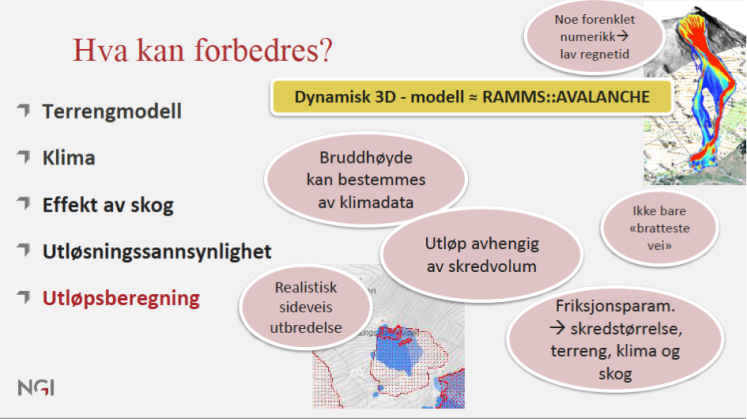
Related to the work on securing our livelihoods, and making good forecasts, Markus Eckerstorfer (Norut and UNIS) presented his interesting work using satellite data to monitor avalanche activity from space. This work is of great importance because we seldom see all the activity (or non-activity) that is out there. Markus work will both make it possible to evaluate the correctness of the avalanche forecasts made, and to improve the ability to make accurate forecasts in the future.
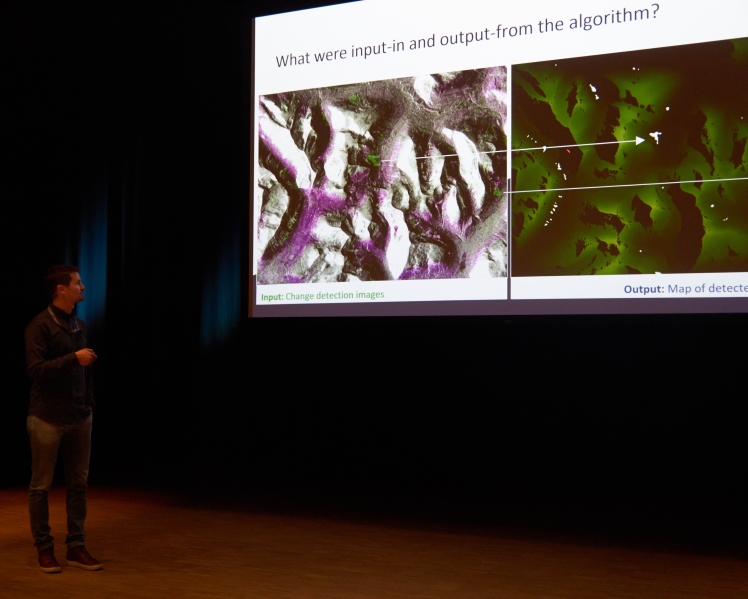
What lies behind the avalanche number?
The avalanche danger is level 2. What does that mean, really? Different countries use different methods to define the avalanche hazard. Most countries either use the EAWS matrix or the Conceptual model of avalanche hazard. Both methods evaluate the distribution of the problem and the likelihood of triggering, but in slightly different ways. Karsten Müller (NVE) explained benefits and drawbacks of both methods. The EAWS matrix provides a simple method of deriving avalanche hazard rates, but does not provide clear definitions on the underlying factors (high vs low additional load). This means that an avalanche danger on level 2 in one country can be different from a level 2 in another country. The conceptual model provides clear definitions, but does not easily produce a danger rating. Karsten presented a new model, which combines the EAWS with the concept model called ADAM. This model includes clear definitions and results in a danger scale. I look forward to learning more about this in the future!
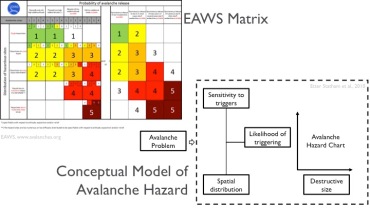
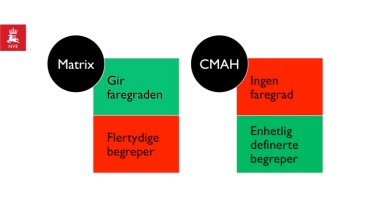
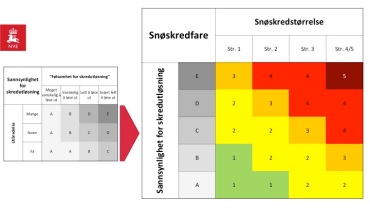
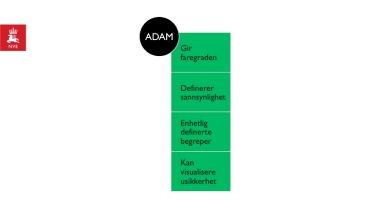
Avalanche knowledge to the people
In Norway, we are lucky enough to have a long history of voluntary work, or ‘dugnad’ as it is called in Norwegian. Many people spend a substantial share of their time doing unpaid work to improve for all. Avalanche education is no exception, and courses are readily available at an affordable price to everyone. Stian Langeland and Jørgen Moland from Norsk Fjellsportforum (NF), and Linda Hallandvik and Jannicke Høyem from the NF avalanche committee talked about how to improve the content and progression in the Norwegian avalanche education. Important news are that advanced avalanche courses will be available also to those who do not intend to become instructors, and that NF is working on developing clear learning outcomes for each stage of the education.
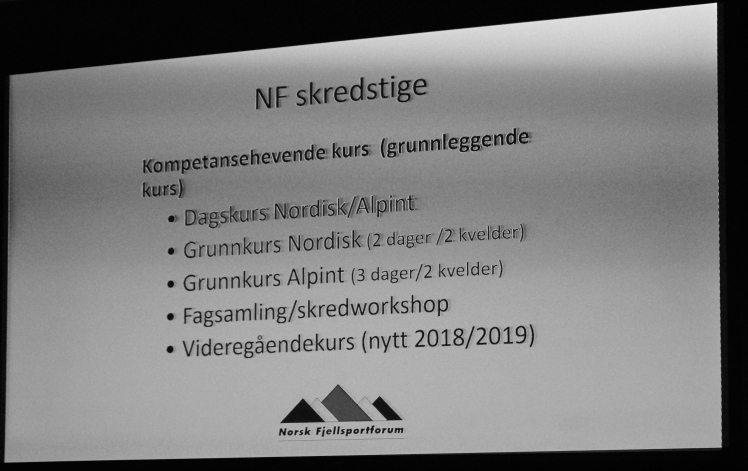
Other really great news is that NVE will make their RegObs courses, which were previously only available to avalanche observers, available to all. If I were in Norway the coming spring, I would definitely sign up!
Human factors revealed
Four sessions on Skredkonferansen were devoted to human factors. As previously mentioned, Jordy Hendrikx, Markus Landrø and Marit Svarstad Andresen (Norwegian mountainguide) started the conference on Friday. On Saturday, we listened to three presentations from CARE and UiT. Bjørn Michalsen (Øytun, CARE) prestented results from a Kahoot (an online survey tool) conducted on one of the avalanche seminars in Tromsø. 302 people answered the short survey. Of these, 141 were women. 30 percent had no formal avalanche education and 38 percent had more than 3 days of avalanche training. Bjørn’s short study showed several descriptive features that are worth mentioning. Almost everyone in the room use the Norwegian avalanche forecasting service (Varsom.no) before they go on tour, but very few had heard about decision tools such as the Avaluator, the basic reduction method or the 3×3 method (a discussion about the different methods can be found here). Instead many rely on the Afterski method (a more conservative variant of Munter’s reduction method). The fact that so few had heard of the 3×3 method is surprising as this is the method taught on avalanche courses in Norway. However, it may of course be the case that many use these methods, but do not remember the names. Finally, 30 percent of the respondents said that they trigger at least one avalanche per season. This is a very good example of why an analysis of accident data does not provide us with the full story..
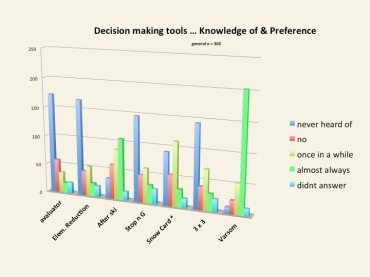

Audun Hetland (Department of psychology, UiT and CARE) presented preliminary results from interviews with 12 Snowmobilers in Northern Norway. The sample is too small to draw any conclusions, but the stories told by this small group in combination with the upsurge in avalanche accident by snowmobilers in North America show that snowmobilers is a group that we need to study more.
Maia Herding Solberg and Gerit Puhl (Department of psychology, UiT and CARE) presented results on the effects of physical arousal on cognitive ability. During spring 2017, we constructed a lab at UiT, in which we simulated an ascent up a mountain (participants walked on a treadmill with a heavy backpack and weights around their ankles). As the participants were walking on the treadmill, we asked them to do a set of cognitive tests. We varied the speed of the treadmill to simulate different levels of physical effort. Even though the number of participants was relatively low, the results are interesting. The ability to remember information dropped significantly when the participants’ heart rates increased, and even after the heart rate had come down, the negative effect on cognitive ability persisted. We need to study this further, but this is perhaps something to keep in mind when we charge up the mountains with pounding hearts. How good is our ability to make decisions when we do not remember the information that we have seen?
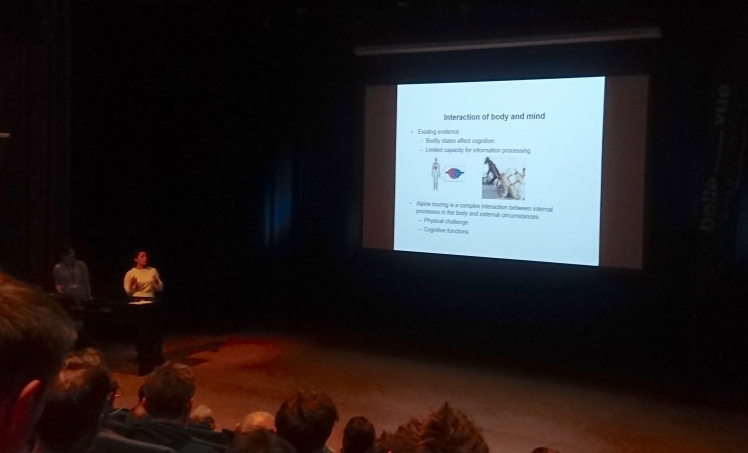
Stefan Mårtensson (LTU) talked his joint work with Mårten Andersson at Åre Lavincenter. During spring 2017, they asked participants on avalanche level 1 courses to fill out the sensation-seeking questionnaire. The questionnaire contains 40 questions which aims to capture preferences for getting thrills, or sensations. Stefan and Mårten’s results show that the participants sensation-seeking scores were on par with other risk-sport practitioners, but a discussion with the participants also revealed that many were surprised about their results. Some were surprised that they scored so high, while others were surprised that they scored so low. This is interesting, because it points to the possibility that we are unaware of the level of risk that we expose ourselves to. Mårtensson and Andersson concluded that the sensation-seeking scale can be a valuable tool to start a discussion about risk-taking on avalanche courses. I agree.
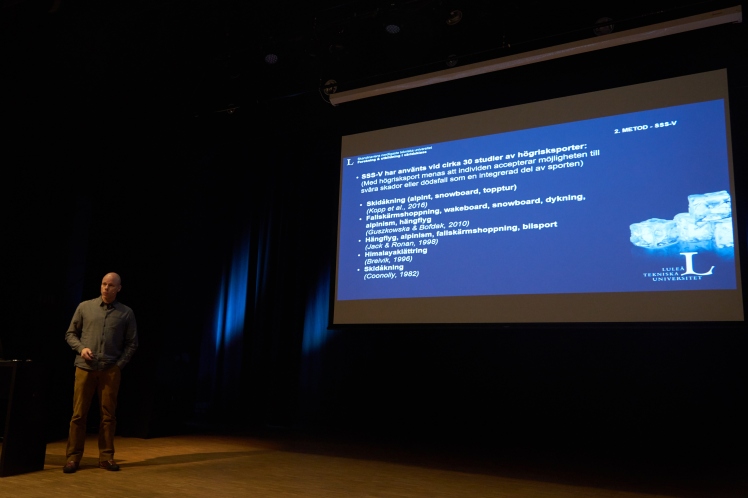
The work by Stefan and Mårten relates to the results that I presented on the last day of the conference. I have previously written a post about the results from the Norwegian pilot, so I will not go into details here. But it is interesting to note that we found a strong link between sensation-seeking preferences and past experience of avalanche incidents. We also found that men in our sample perceive themselves to have more backcountry travel skills as women, at the same level of backcountry experience.
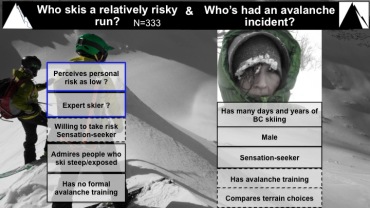
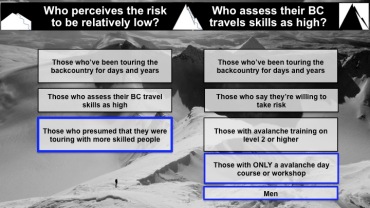
This finding connects well to one of the last presentations of the conference. Matthew Stephensen (CARE), talked about the preliminary findings from a psychology experiment that he carried out during spring/summer 2017. The main aim of the survey was to evaluate how confident we are in our judgements about risk. His results are still very preliminary, but points to the possibility that there is an important difference between men and women: while women’s level of confidence in their judgment of risk increases with their backcountry skills and experience, no such effect can be found for men. In other words, men have the same confidence in their judgments regardless of backcountry experience and self-assessed skills.
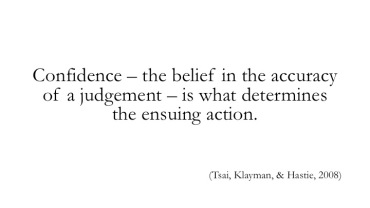
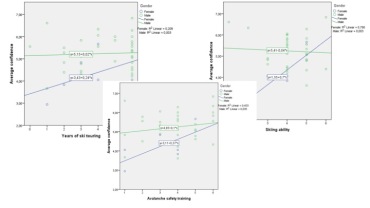
Finally, we got to listen to three talks from people who had too close encounters with avalanches. Gaute Hangaas, who triggered and got buried by an avalanche in Nordland in 2015. Gaute was completely buried by the avalanche. He was dug up by his ski partner, Andreas Schjem, 8 minutes after the avalanche stopped. Since both Gaute and Andreas were wearing gopros, to document their run, everything was caught on film. Gaute has recently finished his master, during which he interviewed avalanche victims. Read more about the accident, and the lessons learned here. Elke Morgner is a coordinator for the Red Cross rescue assistance group in Longyearbyen, Svalbard. On December 19th, 2015, an avalanche hit several buildings in Longyearbyen and killed two people. Elke, her husband two children (of which one was just a few months old), and a friend, were caught in the avalanche, while they were sitting in their kitchen. Miracously, all five survived. Her story shows the importance of proper avalanche hazard maps, and of how well-coordinated rescue actions can save lives. Finally, Thomas T. Kleiven, a ski photographer, triggered and was caught by an avalanche in the French alps in 2014. He was buried under over 2 meters of snow. He was dug out after over 30 minutes, and survived. All three stories are frightening, moving, and thought-provoking.
As the final presenter wrapped up his talk, I felt as if I had been run over by a bulldozer, but my avalanche head was wide awake. I am immensely thankful for having gotten the opportunity to listen to such a fantastic set of presentations. I can’t wait until the next conference in 2019!
//Andrea

2 thoughts on “The Nordic Avalanche Conference 2017”